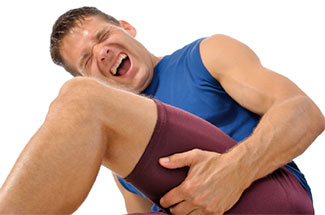Stretching
Many people consider stretching an exercise in of itself, to those people i give this look:
Types of stretching
There isnt just one type of stretching, there's:
- passive
- active
- dynamic
- and ballistic
Active stretching is a much more useful form of stretching than passive in my opinion simply because it makes the stretch greater and essentially give you more benefit for the same amount of work as passive stretching. For active stretching you do the same as you would for passive but now flex your quads, because quads and hamstrings work in opposite ways contracting one relaxes the other, same as you major arm muscles, flex triceps = relaxed biceps, and visa vera, this phenomenon is called reciprocal inhibition and is quite useful in stretching for flexibility purposes.
Dynamic stretching is what you will commonly see athletes in sports perform, swinging there arms back and forth, bringing there knees up high and jogging in place and other similar activities, this makes the muscle warm while stretching it just a little to get it used to wider ranges of motion to come but not enough that it looses tension and performance suffers.
Last and certainly least is ballistic stretching which is considered very bad for you and your muscles and is just about as useless as it comes in stretching techniques, this is when you would be doing said toe reach stretch and instead of calmly reaching you'd bounce yourself trying to touch and grab your toes. whats dangerous about ballistic stretching is that not only does it make it harder to increase your flexibility but it can actually do the opposite and cause you to lock up because the part of your mucles called the golgi tendon which connects the muscles to bones through tendons is what releases muscle tension to allow for a safe stretch so to prevent a muscle tear, dynamic stretching doesnt allow this and makes it more and more likely for you to tear a muscle.
Dont be this guy, dont do ballistic stretching
So when the heck do i stretch?
So now that you know the different types of stretches, its time to learn WHEN to stretch. Stretching releases muscle tension because when you stretch a muscle you pull the actin and myosin filiments apart, those filiments pulling together is what causes you to be able to flex, your muscle, lift something, MOVE, all muscle action is controlled by those filaments pulling together to cause tension, tension = strength. so its not a smart idea to lessen your output of tension right BEFORE a workout. make sense? some people like stretching in the morning, but being "cold" i never got a good stretch in the morning and some articles i've read suggest that in the P.M. is when we're at our most flexible, and my own experience agrees with this, so post workout, pre-sleep i would reccomend as the best times to initiate a flexibility routine.
"But so and so told me to stretch pre-workout"
To tie this article up, the ONLY time you should stretch pre workout is if you're doing dynamic stretching to warm up (also include warm up sets for exercises being performed), and corrective passive stretching (only on orders from your personal trainer).
Not included in this article is stuff like pnf stretching which is really cool and awesome.
Not included in this article is stuff like pnf stretching which is really cool and awesome.



No comments:
Post a Comment